How to Fix a Running Toilet
If your toilet won’t stop filling up, or it intermittently fills for awhile without being flushed, don’t fret; chances are, the problem resides right inside the toilet tank, and even the most expensive fix will only run you about $10. Here we show you how to fix a running toilet .
Remove the lid
The first thing to do is identify the source of the problem. Remove the lid on the top of your toilet tank and set it aside. And by the way, don’t be afraid of the water in the tank; it’s fresh (not sewage), even if it looks a little gross from all the mineral accumulation along the tank surfaces.
The fill valve
Inside the tank, you’ll see a fill valve (also called a "ballcock"), typically a tower-like structure in the rear left corner of the tank (see photo below). Newer fill valves often have a cylindrical float that rides along the shaft of the valve assembly. Older versions have a metal arm and a float ball. Pressure-type valves have a flat, roundish piece at the bottom of the tank, with no tower.
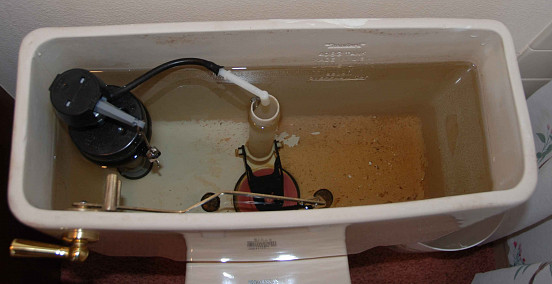
Overflow tube and flapper
In the center of the tank, there’s an overflow tube with a spout (and attached plastic tubing) clipped to its edge (see photo below). This is what refills the tank after each flush. At the bottom end of the tube is the flapper, a rubber trap door that controls the flow of water between the tank and the bowl (see second photo below). When you push the toilet’s flush handle, it pulls a chain that lifts the flapper, allowing water to flood into the bowl. When the tank is empty, the flapper returns to its horizontal position to seal off the tank for the refill.
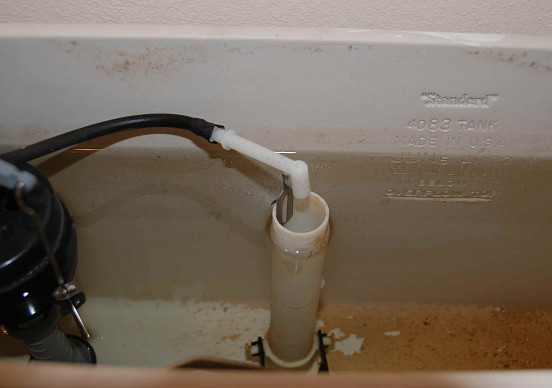
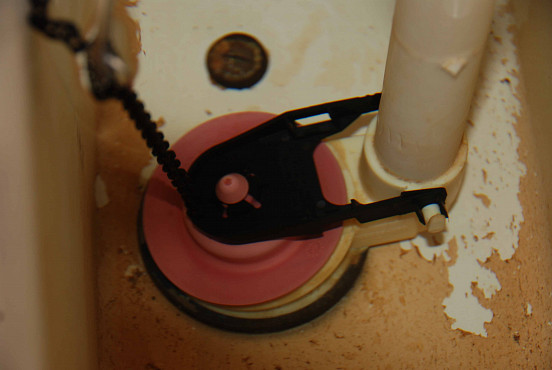
Diagnose the problem
Now that you’ve become acquainted (if not yet friendly) with your toilet workings, let’s diagnose the problem and show you how to fix that running toilet. If your toilet runs constantly, you should see water spilling over and down into the top of the overflow tube, indicating that the water level on your fill valve is set too high.
Correct this by lowering the height of the float according to your valve type. Adjust cylinder-float models by squeezing the metal clip and moving it down along the thin metal rod (see photo below). Other fill vales may have an adjustment screw at the top of the valve assembly. Old ball-float types can be adjusted by carefully bending the float arm in its center, so the float end is set deeper into the tank.
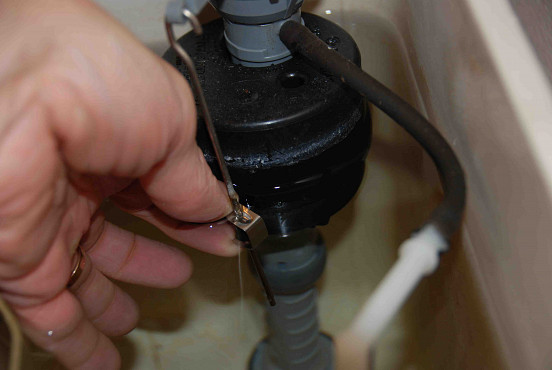
Replace the fill valve
Sometimes fill valves simply go bad and fail to shut off the water under normal conditions. In this case, purchase an inexpensive cylinder-type fill valve at any home center or hardware store. To replace the old valve:
- Turn off the water supply to the toilet at the fixture’s shutoff valve (see photo below).
- Flush the toilet to empty the tank.
- Disconnect the refill spout from the overflow tube inside the tank.
- Place a bucket on the floor underneath the fill valve. Remove the retaining nut on the fill valve, using slip-joint pliers, and pull the valve assembly from the tank.
- Install the new valve in the reverse order.
- Be sure to set the valve shaft length to fit your tank’s height, and set and check the water level, following the manufacturer’s directions.

Correct a faulty flapper seal
If you have the other most common problem—intermittent refilling, or “topping off” of the tank—chances are the flapper is not sealing properly. Make sure the little loops or clips on either side of the flapper are properly connected to the lugs (or tabs) on the overflow tube (see photo below). Also make sure the chain connecting the flapper to the handle arm has a slight amount of slack in it; if this is too tight, the flapper can’t close completely. Alternatively, if the chain is too loose, it can easily get snagged on the handle arm or its own connecting clip, creating the same problem with the flapper.
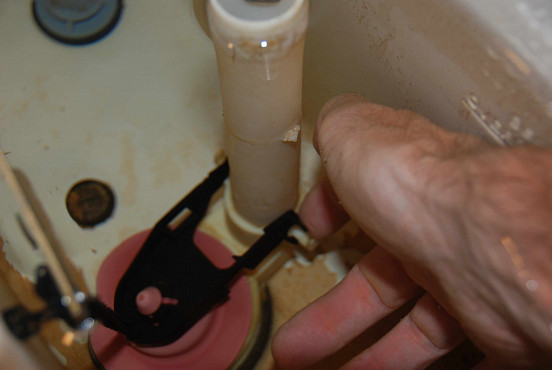
Replace a bad flapper
If your problem still isn’t solved, you probably have a bad flapper (they can crack and degrade over time). To replace the flapper, turn off the water supply at the shutoff valve, then flush the toilet to empty the tank. Disconnect the chain from the flapper, and slip the connecting loops or clips from the flapper base. Install a new flapper in the reverse order.
Tips
Fill valves often are sold individually or as part of a kit that includes a new flapper. If your toilet parts seem well past their prime, it’s a good idea to spend a few extra bucks on the kit, since the old flapper might start leaking soon anyway.
If you're not interested in learning how to fix a running toilet, you can always hand the problem over to a pro. Just be sure to hire a reliable, licensed plumber.
Updated February 27, 2018.
Looking for a Pro? Call us (866) 441-6648

Plumbing Average Costs
Plumbers Experiences

Gas Line Installation Made Simple

Hire A Meticulous, Highly Professional Plumber For Peace Of Mind



